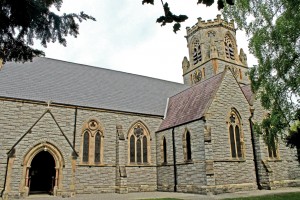
Church Bells are something you might well feel indifferent toward; that is, unless you live nearby a church.
If you do, then you may think they are either an important part of your local community or simply noise pollution. Whichever camp you fall into, they are hard to ignore.
Bells were first used in Christian churches in AD 400. Their initial use has been credited to Saint Paulinus of Nola, whose remains lay at the church of Saint Adalbert, now Saint Bartholomew’s, in Rome. 1,600 years later, we are still divided by the “ding dong” in the distance.
St Bartholomew’s, a Church of Ireland parish church on Clyde Road in Ballsbridge, is a good example of what happens when two strongly held opinions about local soundscapes collide. The bells of “St Barts”, as the church is known locally, had chimed every 15 minutes and counted out the hour, every hour, for 130 years. Then, in 2009, Dublin City Council received two noise pollution complaints.
The Council informed the Church that they would face fines of up to €3,000 if they allowed the bells to ring at night. When the Vicar of St Barts, Andrew McCroskery, was previously asked about inquiries from new residents about the chimes, he is quoted as saying, “We always asked them to see if they could live with them for a week and to come back to us if they couldn’t. No one ever came back.”
In an attempt at compromise, the Church’s solution was to consult with a specialist horologist (an expert in clocks and their workings), who installed a mechanism that silenced them from 11pm to 7am. There were problems with this however; the clock and “carillon”, which is the system where several different bells are struck to produce a melody, are a protected structure, so it was difficult to stop the chimes without damaging the clock, strikers and bells themselves. As a result, the mechanism failed repeatedly, more complaints were received and in September of 2013, it was decided to stop the clock completely.
The local reaction was overwhelmingly in favour of re-instating the bells. ULSARA, the Upper Leeson Street Residents Association, and the Pembroke Road Residents Association, had previously been involved in the campaign to halt the original plans for the redevelopment of the Jurys Ballsbridge site. They were able to mobilise very quickly and raised funds for legal representation, gather signatures and lobby local representatives.
Members of the church themselves worked tirelessly to find a way around the problem, but to no avail. Then, just as all seemed lost, the Council changed their position. Rev McCroskery said, “Out of the blue we got a very short email from the Council saying they were no longer pursuing action against us in relation to the clock, and we could turn it back on.” As it turned out, Dublin City Council had been given incorrect legal advice. The matter had been thrashed out in court in 1882, so the ruling was in favour of St Barts.
Members of the church held a well-attended celebration after they were switched back on, and the general consensus in the area is that it was a narrow escape for something that is held dear by the community. When contacted by NewsFour, Rev McCroskery said he wished to “leave the matter there.”
Church bells and the law
An American man, John Devaney, of Rhode Island, has filed a lawsuit in a US District Court personally suing Pope Francis, amongst others, over the noise from his local church. Devaney told the Providence Journal that the bells have so disrupted his life they even helped to bring about the demise of his marriage. In most US States the laws around noise pollution do not cover places of religious worship, but the laws relating to noise here are very different. The law in Ireland governing this area is covered in Section 108 of the Environmental Protection Agency Act 1992 and the Environmental Protection Agency Act (Noise) Regulations 1994. It states that “noise such as that coming from other homes, workshops or local businesses that is continuous, repeated, loud and occurring at such times and of such duration that it affects the quality of life of the person” is covered in law. While the law does not specifically mention an exact level or standard of noise that is illegal, if it is affecting the quality of life of a citizen, then you have a right to complain. The Citizens Information Board advises that “you should approach the person or business causing the noise and explain that it is a nuisance and try to come to a mutually acceptable solution. If this does not work, your local authority has the same power as individuals to bring noise complaints to the District Court”.
The maximum fine for conviction on breach of noise regulations is €3,000, 12 months in prison, or both.
By Steve Kingston

